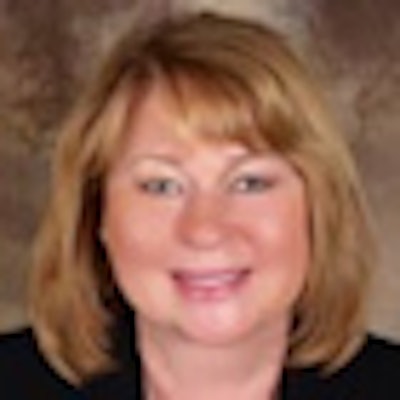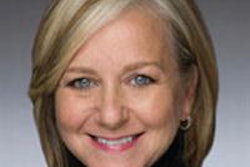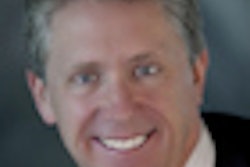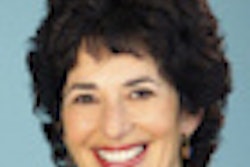
DrBicuspid.com is pleased to present the next installment of Leaders in Dentistry, a series of interviews with researchers, practitioners, and opinion leaders who are influencing the practice of dentistry.
We talked with Pamela Quinones, RDH, president of the American Dental Hygienists' Association (ADHA). Quinones has practiced clinical dental hygiene for more than 30 years and owns a dental hygiene placement service. She earned her Bachelor of Science in Dental Hygiene degree from West Liberty State College in West Liberty, WV, and has received a number of awards and recognitions, including the ADHA Distinguished Service Award.
 Pamela Quinones, RDH, ADHA president
Pamela Quinones, RDH, ADHA president
She discusses the role midlevel providers and dental therapists can play in increasing access to care and whether there are too many dental hygienists and not enough jobs. Looking ahead, she says that the access-to-care crisis has created a demand for the current model of dental hygiene to evolve -- a challenge that holds much opportunity for current and future hygienists.
DrBicuspid: Lack of access to care is a major contributing factor to the poor oral health of Americans. How does the introduction of midlevel providers and dental therapists affect the situation?
Quinones: As we consider the access-to-care crisis in the U.S., it is important that we think broadly about an array of solutions and innovations that can extend the reach of the current dental delivery system. Increased reimbursement rates, broader recognition of reimbursable providers, and elevating oral health literacy are important issues that we all need to address to improve access, along with innovations in the dental workforce.
Midlevel healthcare providers have proved effective and successful in a number of healthcare fields. The ADHA has long been a proponent of exploring new workforce models in dentistry and has been an advocate for a number of different provider proposals. The ADHA believes that patients will benefit the most from midlevel providers who are rooted in dental hygiene, as these providers can deliver both preventive and minimally invasive restorative care.
There has been resistance to the ADHA advanced practitioner in dental hygiene and the midlevel provider models from many dental organizations that cite patient safety as a concern. What is your response?
The ADHA supports dental hygiene-based workforce models with practitioners who are licensed, have received the required education for their scope of practice from an accredited institution, and who are directly accessible to the public that requires their services.
In regard to safety concerns, to date there have been no evidence-based studies that indicate that existing midlevel providers are providing a lower standard of care or placing their patients at risk. Historically, data from a study conducted in the mid-1970s on expanded function dental auxiliaries (EFDAs) indicated that with the appropriate additional education EFDAs could safely perform restorative procedures.
Additionally, a recent study on dental health aide therapists (DHATs) practicing in tribal communities in remote portions of Alaska found that DHATs are providing a safe and satisfactory level of care within their defined scope of practice.
Last year DrBicuspid.com ran an article that explored whether, contrary to government reports, the dental hygienist market is saturated. What is your perspective?
Just like many other professions, during the recent economic recession, clinical dental hygiene jobs saw a decline in some parts of the country. This factor, coupled with the expansion of dental hygiene education programs throughout the U.S., has produced an oversupply of dental hygienists in some areas that has further complicated the situation. The good news is that, as the economy slowly improves, we are beginning to see these conditions ease in parts of the country.
“Dental hygiene has arrived at a crossroads of change.”
— Pamela Quinones, RDH, ADHA
president
The proliferation of new dental hygiene programs has been a key issue for the ADHA and dental hygienists in recent years, prompting the ADHA to establish a letter-writing campaign for hygienists nationwide to share their concern with the ADA Commission on Dental Accreditation (CODA). The campaign produced more than 700 letters from concerned hygienists from 45 different states. CODA also hosted an open hearing at ADHA's recent annual session in Nashville, TN, where more than 150 hygienists attended, many of whom provided testimony on this issue.
On February 3, 2012, CODA ruled to accept the recommendation from the Dental Hygiene Review Committee to change the Dental Hygiene Accreditation Standards by requiring, rather than merely recommending, a formal needs assessment on the initial application for CODA accreditation for new dental hygiene education programs. ADHA believes that this change will have a great impact on the dental hygiene profession moving forward and should help to alleviate a saturated dental hygienist market in the future.
Another sign of encouragement for all dental hygienists are new reports being issued by agencies such as the Institute of Medicine (IOM). Last year, the IOM released a report, entitled "Improving Access to Oral Health Care for Vulnerable and Underserved Populations," that highlighted the increasing need for oral healthcare services in America and the potential role that dental hygienists can play in providing these services.
A great example can be seen with the aging of the baby boomer generation. The growing senior citizen population is going to put a larger burden on an already taxed oral healthcare system. This development opens the door for many hygienists who are licensed and educated oral health professionals to have an impact on easing that burden through new and existing practice settings.
Given the growing emphasis on preventive care and the oral-systemic link, do you think that hygienists should play more of a role in promoting preventive care and making product recommendations?
Dental hygienists play a central role in health promotion and disease prevention. Educating the public on a myriad of health issues, such as smoking cessation, nutritional counseling, and oral cancer prevention, are all part of the knowledge and skill sets of a dental hygienist.
In addition, according to research studies, dental hygienists are highly regarded by corporations and patients as a valuable resource for home care product recommendations and regimens. As the team member who spends the largest amount of time with patients, dental hygienists are naturally viewed as a trusted professional resource for oral health information. It is because of this trust that patients respect the hygienist's opinion when choosing the products that best suit their specific oral healthcare needs.
In a survey of 300 hygienists conducted by the Lanmark Group in 2009, 93% of respondents said that the best way for them to accept a new product or service is to show them the clinical science and relevance behind it. Are hygienists being called upon to adopt evidence-based decision-making into their daily clinical practice?
Evidence-based decision-making is the foundation of the practice of dental hygiene. In fact, evidence-based decision-making is such an inherent part of dental hygiene practice that the ADHA developed the Standards for Clinical Dental Hygiene Practice as a guide for hygienists to use when considering how new products can potentially benefit their patients and their practice. This guide is actually an expansion upon the Applied Standards of Clinical Dental Hygiene Practice, which was developed by the ADHA in 1985. So for more than 25 years, the ADHA has recognized the importance of evidence-based decision-making for dental hygienists.
In your opinion, what are some of the exciting/useful new products that hygienists should be aware of?
Products geared for use by dental hygienists in practice and the over-the-counter home care products that dental hygienists recommend are constantly evolving. Also, changes in the scope of dental hygiene practice, such as the addition of local anesthesia or the use of lasers, can change the technology and products that hygienists use to deliver dental hygiene care.
The issue that I want to stress to dental hygienists is that they need to understand the science behind the products that they use and recommend. I encourage hygienists to read the research studies, consider the Standards for Clinical Dental Hygiene Practice and how a particular technology or product fits with the process of care, and then make informed decisions and recommendations for their patients.
What are the key challenges dental hygienists face today?
Like a number of healthcare professions that have come before, dental hygiene has arrived at a crossroads of change that will provide new options for dental hygienists to consider and that may be a challenge to their traditional model of operation. The access-to-care crisis has created a demand for the current model of dental hygiene to evolve, and this challenge holds a great deal of opportunity for both current and future hygienists.
The largest challenge right now for a number of hygienists is to broaden their thinking, expand their horizons, and gain the knowledge and skills to best position themselves to create and pursue new opportunities.



















